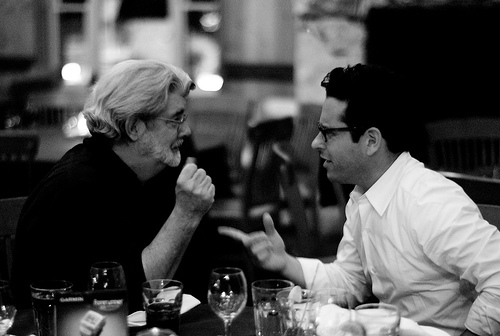We've all developed our own writing methods. If there's a million writers in the world then there's AT LEAST a million methods. No one method is better than another, just different. This method might suit you and it might not. My hope is that you'll find something in it you find useful.
A few months ago I sat down at my writing desk after a particularly grueling shift at my day job and tried to write but the words wouldn't come. I asked myself, "How do I write a story?" How do I approach the initial idea and transform that into a story? That's when I began putting this method together. If you like it, try it out!
THE STARBURST METHOD
There are about 10 steps to this method so, to keep the size of my posts manageable, I'll roll it out over the next several days. Today, we'll take a look at the first step.
1. Formulate a one sentence description of your story
This comes from two screenwriters, Blake Snyder author of Save The Cat! The Last Book on Screenwriting You'll Ever Need
Why do this? Why start from a one-sentence summary of your story? For one thing, it will help prevent you from straying from your initial idea and drifting off point. That said, if you intentionally decide to change your story's focus because you discover the idea isn't working for you, that's fine.
Also, and this is from Save The Cat, you need to make sure that your idea for a story creates a "compelling mental picture". In order to do this it needs to have all the elements of the story in it, only compressed.
Now, I'm not sure that Blake Snyder meant exactly this, but one of Nathan Bransford's posts was enormously helpful to me in understanding this technique, specifically his excellent post Query Letter Mad Lib. Here is Mr. Bransford's formula for how to compose your one sentence description:
[protagonist name] is a [description of protagonist] living in [setting]. But when [complicating incident], [protagonist name] must [protagonist's quest] and [verb] [villain] in order to [protagonist's goal].For instance:
Hexanon Pennystripe, a man who describes himself as the greatest detective on earth, has just accepted a case no one believes he can solve -- including himself. But when an ancient curse takes another man's life, Hexanon knows he must put his vanity aside and capture the killer in order to restore order to the world.or
The death of a wealthy English archeologist sparks talk of a curse when three other people involved with the expedition die from seemingly unrelated causes.Now, I'm sure you can do much better than either of those examples, but you get the idea.
Next time we'll talk about the next step: expanding your sentence into five sentences that, taken together, mirror the 3-act structure of a play.
Thanks for reading!
Links:
The Starburst Method, Part 1: Creating a one sentence summary
The Starburst Method, Part 2: Developing our one sentence summary
The Starburst Method, Part 3: Creating a five paragraph summary
The Starburst Method, Part 4: Developing characters
The Starburst Method, Part 5: Creating a five page summary
The Starburst Method, Part 6: Developing scenes
The Starburst Method, Part 7: The character grid
The Starburst Method, Part 8: The rough draft and narrative drive








